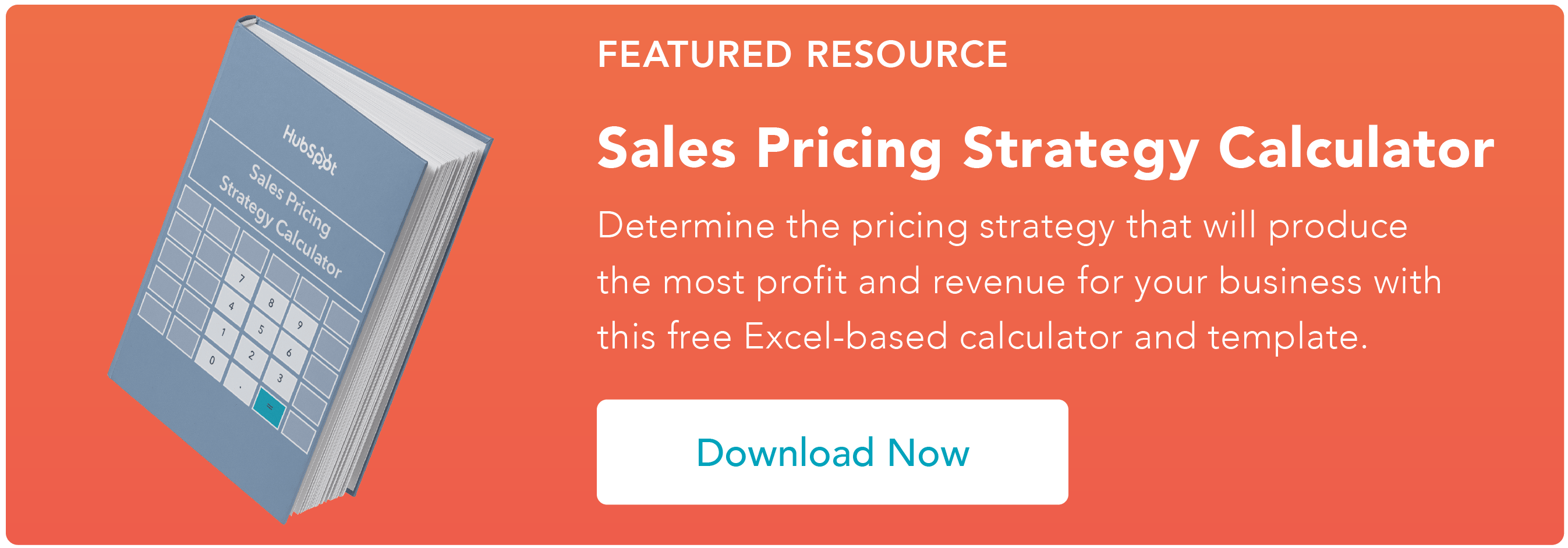Freemium pricing is one of the more prominent avenues businesses can take to build buzz, attract users, and ultimately translate prospect interest into revenue. But popular as it might be, there's no guarantee it will work for your company.
.jpg?width=595&height=400&name=Freemium%20Pricing%20%281%29.jpg)
Here, we'll explore the concept a little deeper, see the core considerations you need to take when deciding whether to leverage this kind of strategy, and review some of its most popular models. You can click any of those links to jump to their respective sections.
Let's dive in.
What is freemium pricing?
Freemium pricing is a pricing strategy where a business offers a version of its product or service with limited features for free while selling one or more premium versions of that same offering — with more robust suites of features — for a price.
The hope behind a freemium pricing strategy is that users who capitalize on the free version of the product or service will be impressed enough with it or discover a need to ultimately purchase a paid version.
While a freemium pricing strategy can draw a sizable user base, the vast majority of users who sign up for the free version of a product or service don't wind up upgrading to a paid option — as the average conversion rate for a freemium plan typically falls between 2-5%.
But even with those apparently underwhelming figures, a freemium pricing strategy can still be profitable and productive for a company. Let's get some perspective on whether one of these models can work for you.
Freemium Pricing Strategy
There are some core factors you need to consider if you're interested in implementing a freemium pricing strategy for your product or service — here's a look at some of the more pressing actions you need to take if you want to leverage one of these models.
Estimate your freemium Customer Acquisition Cost (CAC).
Customer Acquisition Cost (CAC) — the overall cost associated with selling, marketing to, and ultimately acquiring a new customer — plays into whether your business is equipped to handle a freemium pricing strategy.
You don't see an immediate return on your investment when you acquire a free user — and even though they're not paying for your product or service, you still have to pay to support and market to them.
Let's say it takes $20 per year to support a user on your freemium plan. If you have 100 users, that would mean you're spending $2,000 total to support them, but most won't upgrade to one of your paid options — remember, the average conversion rate for a freemium plan typically falls between 2-5%.
If 2.5% of those freemium users ultimately convert, then the customer acquisition cost for your freemium strategy is $800. Once you arrive at that figure, you would need to see how it stacks up to your Customer Lifetime Value to see whether freemium is worth your time.
Compare your freemium Customer Acquisition Cost to your Customer Lifetime Value (CLV).
The next factor to consider when determining whether you should implement a freemium pricing strategy is your Customer Lifetime Value (CLV) — the total revenue a business can reasonably expect from a single customer throughout their relationship with the company. A freemium pricing strategy only makes sense if your CLV for freemium users is higher than your CAC for them.
To build on the example from the previous point, let's say the CLV of a freemium-first customer is $1,000. In that case, it might make sense to leverage freemium pricing — assuming a margin of $200 on each conversion is attractive and sustainable enough for you. If the CLV of a freemium user is only $700, a freemium pricing strategy probably won't make sense for your business.
Be mindful of your expenses.
This step will help you gauge whether a freemium pricing strategy is viable for your business. Consider your business expenses beyond the ones that play into your Customer Acquisition Cost.
Take a look at costs associated with elements like salaries, rent, maintenance for office space, insurance, and other operating expenses that keep your business running. If the sum of those costs ultimately supersedes the difference between your CLV and CAC for freemium users, this kind of pricing strategy won't be profitable.
Freemium Pricing Models
1. Traditional
The traditional freemium pricing model is the one most closely associated with the concept — a strategy where a business maintains a free-forever version of its product or service with a premium version (or multiple premium versions) available for a price.
The goal with the traditional model is that a given user will sign up for the free version of an offering, enjoy or come to rely on it in some capacity, and ultimately opt to buy.
Traditional Freemium Pricing Example — HubSpot

HubSpot operates by a freemium pricing model, offering a CRM and access to a host of other features associated with other offerings in its broader product suite for free — with more fully functional, upgraded products available for purchase.
2. Freeware 2.0
With a Freeware 2.0 strategy, a business offers its core product or service — with its full range of capabilities — free-forever. Monetizing this model rests on a company's ability to sell add-ons to that core offering. In most cases, a business that leverages this strategy doesn't expect to cross-sell or convert most of its free users.
Freeware 2.0 Freemium Pricing Example — Skype

Skype is one of the most prominent companies that leverages a Freeware 2.0 model. The base product and its suite of features are available for free, but extensions like international calling are available for a price.
3. Network Effect
Businesses that leverage the Network Effect model aren't monetizing their products by converting freemium customers — instead, they offer a free product or service to attract a base of users and make money off of actions like selling ad space or distributing aggregate behavioral data.
Network Effect Freemium Pricing Example — Spiceworks

All of Spiceworks' plans are available for free — without available paid extensions. Instead, it relies on a small network of advertisers to generate revenue.
4. Ecosystem
Businesses that use an Ecosystem freemium model typically offer a baseline platform or product for free and monetize by sharing revenue with third parties who offer their products, services, or applications on it.
Ecosystem Freemium Pricing Example — iTunes

iTunes was one of the most prominent examples of an ecosystem freemium model in practice. Users were allowed to use the platform to organize and contribute to their music libraries for free, but they were also able to purchase music and videos from third parties to help contribute to those libraries through the application.
Freemium pricing isn't for everyone — it might not be financially viable or suit the nature of your product or service. But if you think you can make it work, you should seriously consider leveraging it. It's one of the better ways to drum up interest in your offering and ultimately develop productive, lucrative customer relationships.






![Price Skimming: All You Need To Know [+ Pricing Calculator]](https://blog.hubspot.com/hubfs/price-skimming-strategy.jpg)

.jpg)
![B2B Pricing Models & Strategies [+ Pros and Cons of Each]](https://blog.hubspot.com/hubfs/b2b-pricing-models-and-strategies.jpg)

